
#1 Start of the Maidan
Several hundred people gather in protest in Kiev’s Maidan Nezalezhnosti (“Independence Square”). Earlier, on 21st November 2013, the Ukrainian government had unexpectedly announced that it would not be signing an association agreement negotiated with the European Union. The Maidan demonstrations grow larger after 30th November when police officers use excessive force to clear a protest camp occupied largely by students. The next day hundreds of thousands of people in Kiev turn out to protest calling for the government to step down. In the weeks that follow the security forces make several attempts to storm the protest camp in the Maidan. All of them fail. The demonstrations, which will go down in history as “Euromaidan”, spread to other parts of the country.
Steffen Halling
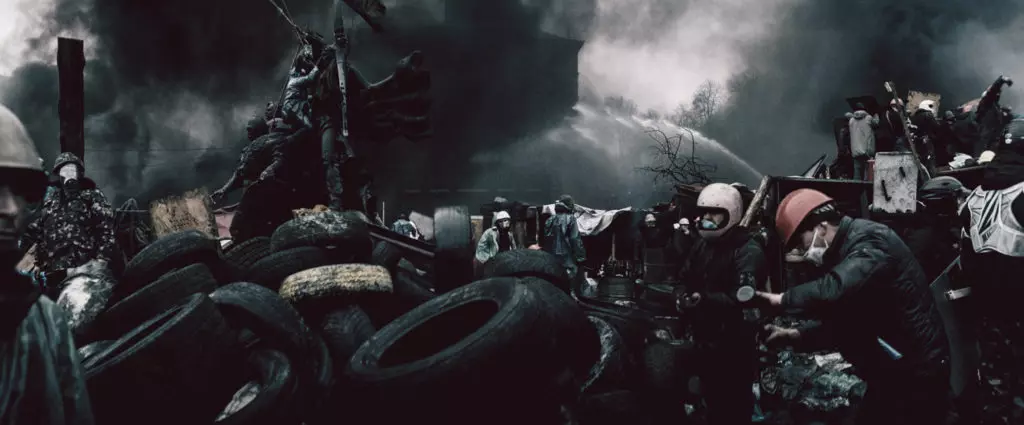
#2 Escalation of the Maidan
The Ukrainian government tries to bring the protests under control through repression and tough new anti-protest laws. Violent clashes erupt repeatedly between police forces and demonstrators. The first deaths occur and there are reports of activists being abducted and tortured. The protest radicalises rapidly. From 18th February, the situation escalates dramatically. Dozens of people are killed when the police make another attempt to storm the Maidan, and a fire nearly completely destroys the trade unions building which protesters had occupied. Sniper fire results in more deaths among the protesters. The demonstrators killed at the protests – around a hundred in total – will later be officially designated the “Heavenly Hundred” in Ukraine. The death toll on the police side is at least 13. On 21st February, in an internationally brokered deal, President Viktor Yanukovych and representatives of the opposition agree to hold early presidential elections. The Maidan protesters reject this deal. Yanukovych, who has lost the allegiance of the ruling elite and the governing party, flees to Russia. On 22nd February, the national parliament declares that he has been removed from office. To date, there are still unanswered questions about the fatal shootings on the Maidan.
Steffen Halling
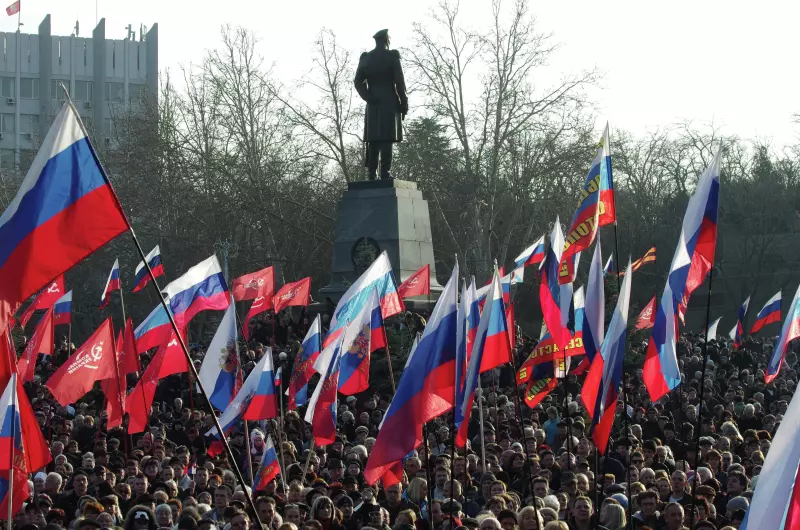
#3 Pro-Russian Demonstration in Sevastopol
On 23rd February, in the wake of Yanukovych’s flight and removal from office, several thousand people gather in Sevastopol where the Russian Black Sea Fleet has its headquarters on the Crimean Peninsula. They are there to protest the change of government in Kiev, which Russian media are calling a “fascist putsch”. There are calls for the formation of armed self-defence units to defend Crimea against the “putschists”. Alexei Chaly, a Russian citizen, is named the “people’s mayor” of Sevastopol. The next day, the Russian flag flies over both Sevastopol and the port city of Kerch. In Russia the demonstration is described as the start of the “Crimean Spring”.
Steffen Halling
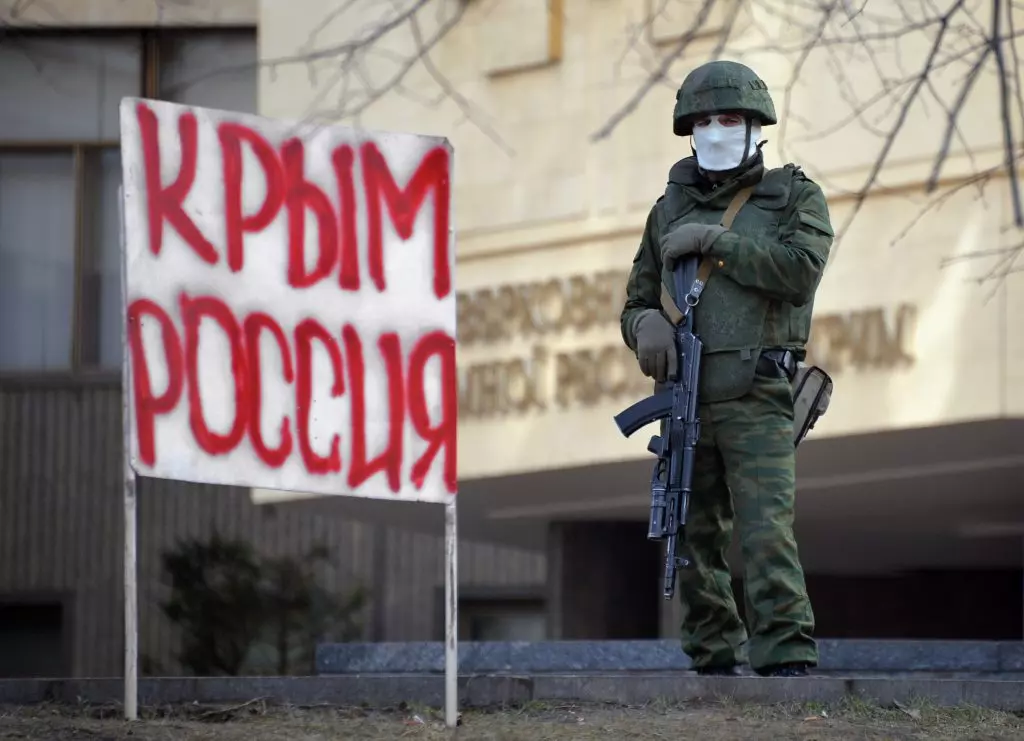
#4 Appearance of the Little Green Men
Russian special forces units operating without insignia appear in Crimea on 27th February 2014 and set about occupying strategically important government and military sites, as well as roads and airports. They are soon dubbed the “little green men” because of their green uniforms. The authorities in Kiev recognise that Ukrainian forces are outnumbered and outgunned; at an extraordinary session held on 28th February, the National Security and Defence Council decides against making a declaration of war. The Kremlin vehemently denies that the “little green men” are Russian soldiers, initially referring to them as local “self-defence forces”. In April 2014, however, Vladimir Putin confirms that they were in fact Russian servicemen, there to protect the residents of Crimea from the “fascist threat” from Kiev.
Steffen Halling

#5 Vote in the Crimean Parliament
On 27th February, around 120 heavily armed men seize the regional parliament building in Simferopol, the capital (according to the Ukrainian Constitution) of the Autonomous Republic of Crimea. Under their control Crimea’s parliament meets in a special, closed-door session, during which Sergei Aksyonov, of the breakaway Russian Unity party, is elected the new prime minister. A referendum on independence from Kiev is scheduled for 25th May 2014. However, the legality of this special session is called into question internationally; since there were soldiers armed with rocket propelled grenades in the parliament building when the voting took place, only certain members of the parliament were granted entry to the building. The 51-member quorum was not met and the resolutions at issue violated both Ukraine’s Constitution and that of the Autonomous Republic of Crimea.
Eduard Klein
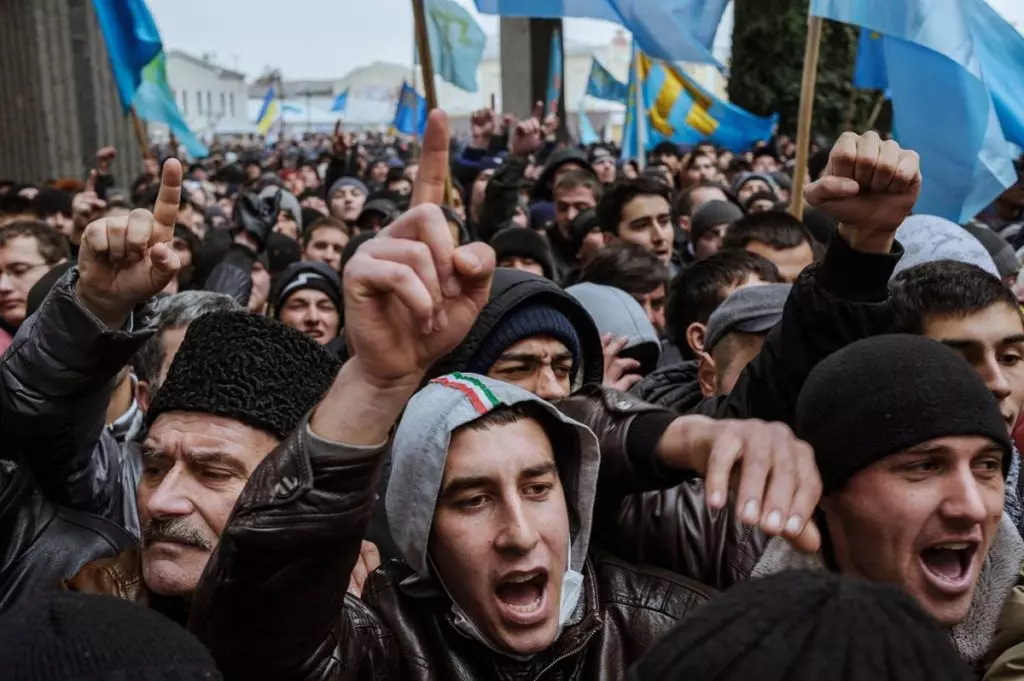
#6 Pro-Ukrainian Demonstration in Crimea
The greatest resistance to the Russian occupation of Crimea comes from the Crimean Tatars. On 26th February 2014, one day before the vote brought about in parliament under force of arms, they manage to block access to the parliament building of the Autonomous Republic of Crimea, temporarily preventing the dismissal of its government. There are clashes with pro-Russian demonstrators. About 30 people are injured, two people die. The Mejlis, the highest representative body of the Crimean Tatars, will later be banned in Russia as an “extremist organisation”. Demonstrations on behalf of Ukrainian unity also take place in Crimea in early March. From this time on, though, harsh repressive measures await activists who revolt against the Russian occupation of Crimea. The Crimean Tatar Reşat Amet is abducted and killed, filmmaker Oleg Sentsov is arrested and sentenced to a long prison term in Russia. International legal experts criticise what they describe as the flimsy allegations against him.
Steffen Halling
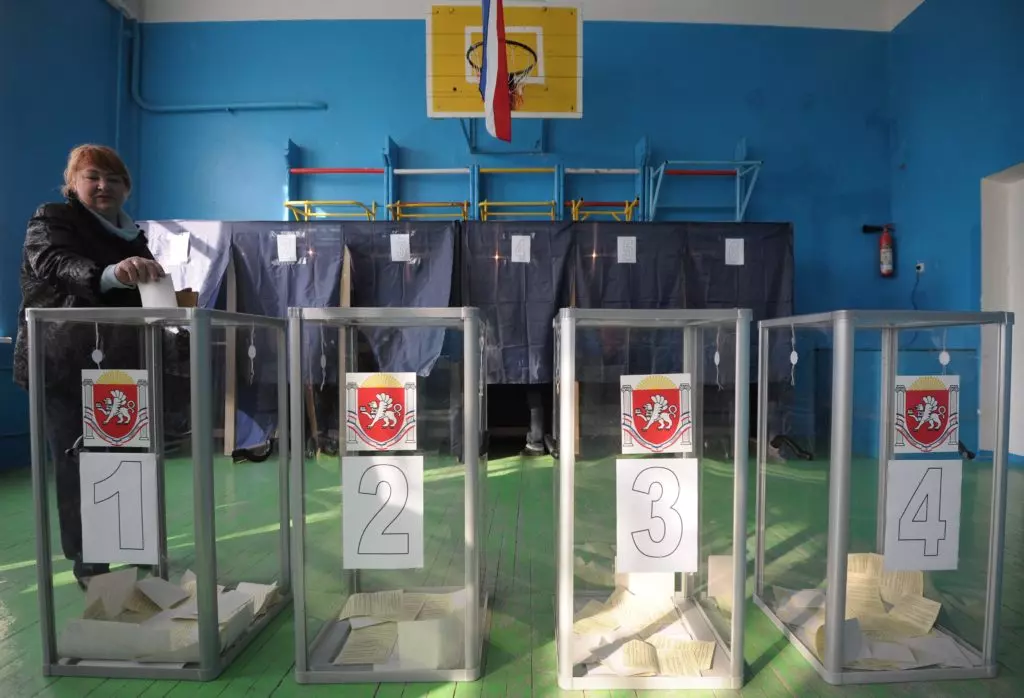
#7 The Referendum
The date of the referendum, originally set for 25th May, is hastily moved forward, first to 30th March and ultimately to 16th March. When the referendum is held, Crimea is under Russian military control. There are two options on the ballot: “reunification” with Russia or the restoration of the 1992 constitution. Retaining the status quo is not up for debate. The official results show that 96.8 percent of the votes were cast in favour of “reunification” with Russia, with voter turnout at 83.1 percent. There is no independent confirmation of these numbers because the OSCE declined to send an election observation mission, noting the unconstitutionality of the referendum. The results are called into question internationally, even by the Russian President’s own Human Rights Council, which speaks of a turnout of between 30 and 50 percent, with 50 to 60 percent in favour of annexation.
In earlier opinion polls, about a quarter of Crimea’s population supported the idea of annexation by Russia. Despite the fact that the referendum is not recognised internationally – the UN General Assembly declares it to have no validity under international law in a resolution dated 27th March 2014 – Russia uses it to justify the official “admission” of Crimea to the Russian Federation. The EU and the USA impose sanctions on Russia in response.
Eduard Klein
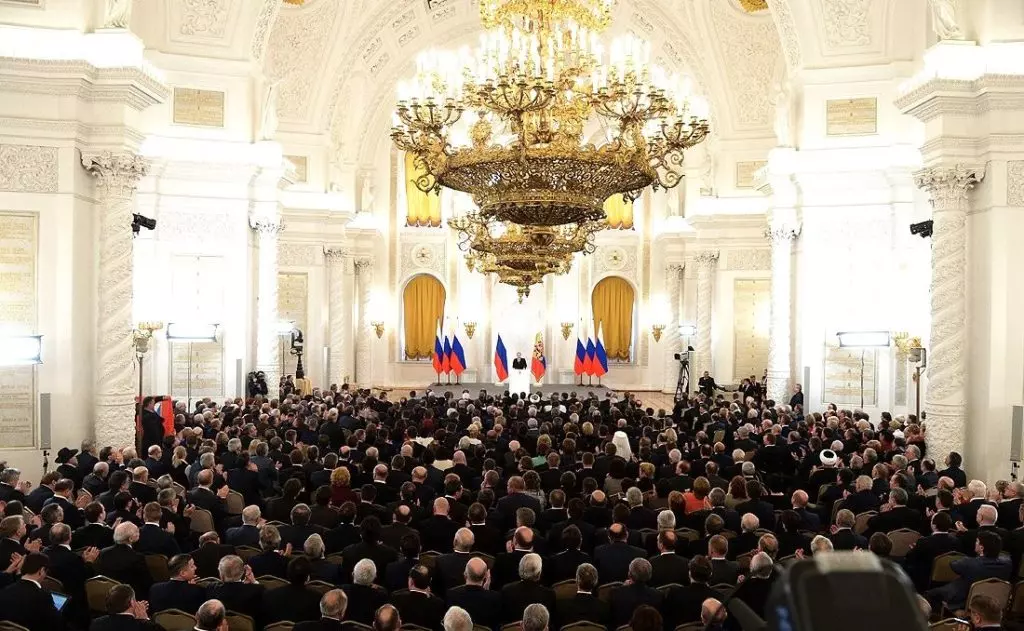
#8 The Crimea Speech
Two days after the contentious referendum, on 18th March Putin holds a lengthy address before the Federation Council and Duma members, in which he announces “Crimea’s reunification with Russia” to loud applause. The reasons he gives for taking this step include historical arguments, the need to protect the Russian-speaking population from a “fascist threat”, and the “convincing” referendum, which he describes as being in full compliance with democratic and international norms. The signing of the accession treaty takes place immediately after the address. “Bringing Crimea back home” launches a huge wave of euphoria in Russia and wins President Putin the highest approval rating of his presidency, 89 percent.
Eduard Klein
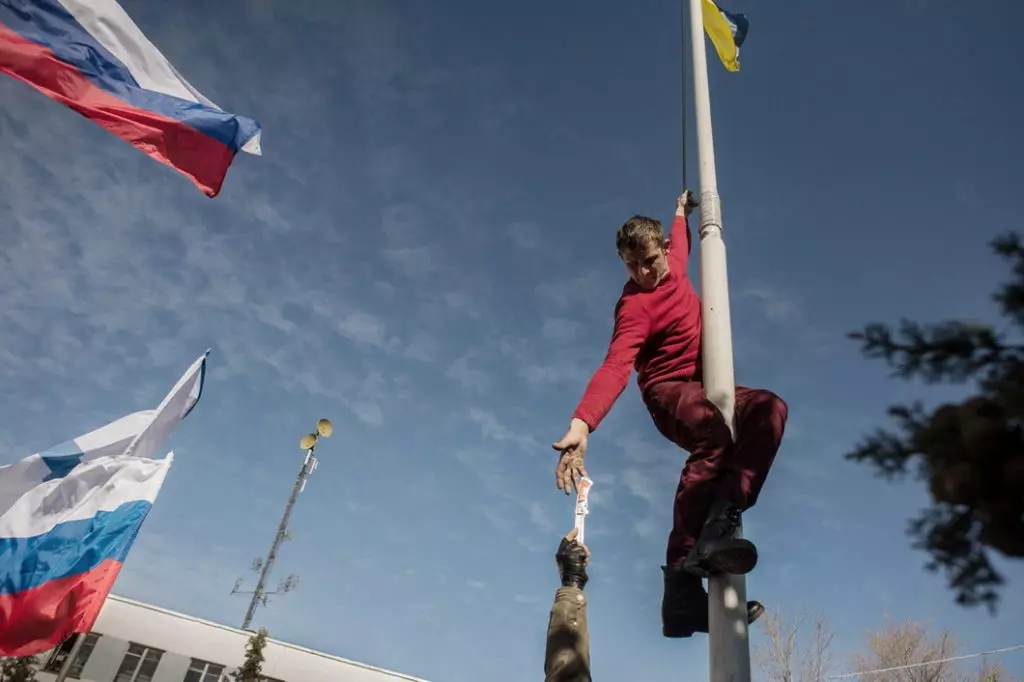
#9 A Perfect Annexation
On 21st March, the Law on Admitting Crimea and Sevastopol into the Russian Federation having been approved by the Federal Council and signed by President Putin, the annexation of Crimea is, from the Russian viewpoint, perfect. Within a mere three weeks, Ukraine’s Autonomous Republic of Crimea has become – in Putin’s words – “an inseparable part” of Russia. This occurrence, unparalleled in post-war Europe, draws fierce criticism internationally: it is characterised as a flagrant violation, on Russian’s part, of numerous international agreements, including the United Nations Charter, the Helsinki Final Act of 1975 and the 1994 Budapest Memorandum. On 22nd March, Russian soldiers capture the Belbek air base, the symbol of Ukrainian resistance; two days later, the Ukrainian Army officially decides to pull its forces out of Crimea. With their withdrawal, Russia has absolute control over the peninsula from then on.
Eduard Klein
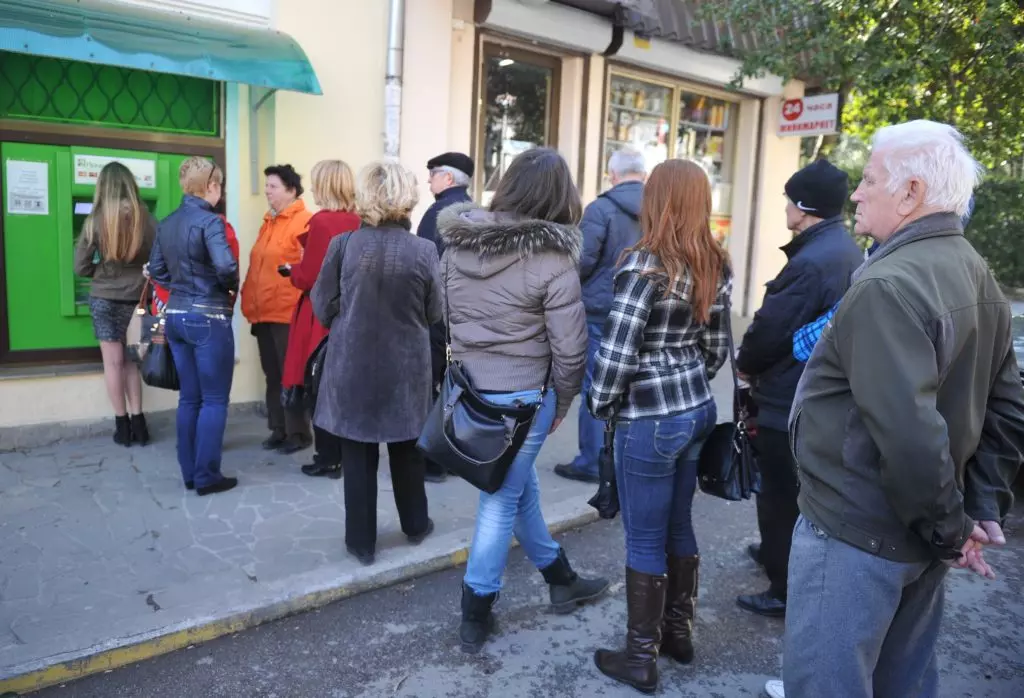
#10 New Reality
With annexation by Russia, a new reality dawns for the circa 2.3 million people living in Crimea. Russian passports are issued, control points are set up at the border to the Ukrainian mainland and a new official currency is introduced, in the form of the Russian rouble. Russian broadcasters replace the Ukrainian stations, the Crimean Tatar station is shut down, and there is a rapid clamp-down on press freedom. Basic rights, such as the freedom of assembly and expression, are curtailed. Critics of the annexation are the most affected, like the Crimean Tatars, who are subjected to political persecution, intimidation and, in some cases, abduction and torture. Companies and real estate assets are expropriated and nationalised, whilst Western businesses pull out due to sanctions. These make life harder for the people in Crimea by restricting their freedom to travel, for instance, and causing Western banks, telecommunications companies and airlines to close down their operations there. This is accompanied by soaring prices, falling visitor numbers and a poor water and power supply. The scale of social and economic hardship in the population comes across clearly in recent surveys and in other ways.
Eduard Klein
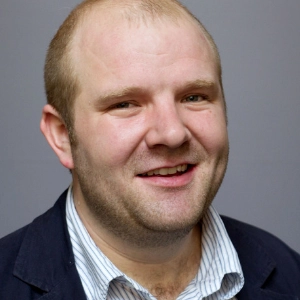
Steffen Halling is a doctoral candidate at the Centre for East European Studies at the University of Bremen. He is writing his dissertation on oligarchs in Ukraine. As a fellow, he is also member of the Eastern Europe research division of the German Institute for International and Security Affairs (SWP).
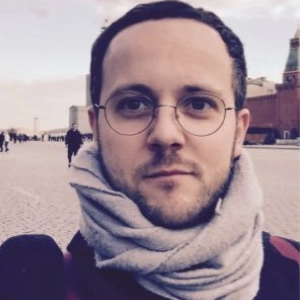
Eduard Klein completed his doctoral degree at the Centre for East European Studies at the University of Bremen with a dissertation on anti-corruption measures at in the Russian and Ukrainian higher-education sector. After working in a number of jobs, including positions at dekoder, the German Bundestag and the Centre for Liberal Modernity, he returned to the Centre for East European Studies in Bremen, where he serves as editor of Ukraine-Analysen and as a research associate with the Discuss Data project.
